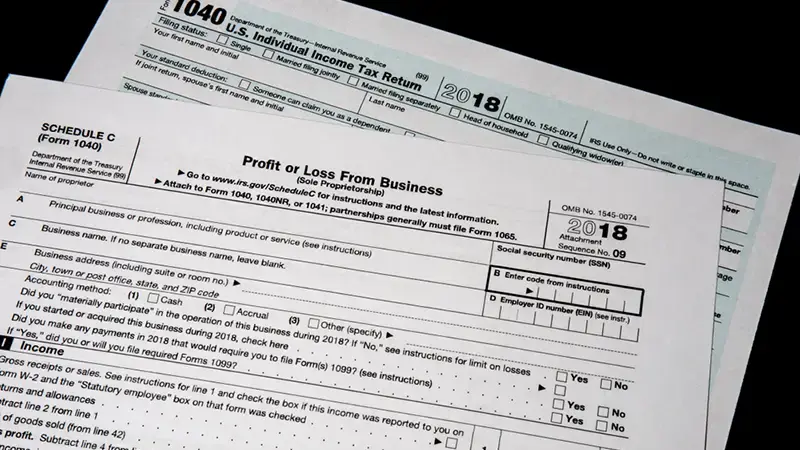Expat Retirement Planning: Strategies for a Secure Future Abroad
Embarking on an expat retirement requires more than just a destination; it demands a thorough plan. This guide demystifies expat retirement planning,...
Last updated May 5, 2025.
If you're self-employed, you'll likely need to file Schedule C Form 1040 to report your business income and expenses to the IRS. This form is essential for anyone running their own business, working as an independent contractor, or earning income outside of traditional employment.
| Key Takeaways |
|
IRS Schedule C, officially titled “Profit or Loss From Business,” is an attachment to Form 1040 that self-employed individuals use to report their income and expenses. Whether you're a sole proprietor, gig worker, or small business owner, you must include Schedule C with your 1040 form when filing your taxes.
Typically, completing Schedule C also necessitates filling out Schedule SE, known as 'Self-Employment Tax.' This form is used to determine the Social Security and Medicare taxes due on your self-employment earnings and to record them on Form 1040, Schedule 2, Part II, under 'Other Taxes.'
Schedule C is not a standalone tax form. It must be filed along with your Form 1040, the standard federal income tax return. When you submit your return to the IRS, Schedule C details your business income and deductions, and the resulting net profit or loss carries over to Schedule 1 and then to line 8 of Form 1040.
If you generate income through self-employment as a sole proprietor or as a single-member Limited Liability Company (LLC), you will need to file a Schedule C. However, a Schedule C is not used to report the business income and expenses of a C Corporation or S Corporation.
As a self-employed individual, you should receive 1099 forms, such as the 1099-NEC, from your business clients. These forms detail the money paid to you by a business during the tax year. Additionally, you may need to issue 1099s to any vendors or contractors to whom you have made payments through your business. These payments are generally recorded as expenses on your Schedule C, along with other eligible business expenses.
You can operate your own business as a single-member LLC, which typically requires completing Schedule C. This doesn't necessitate having employees or an office, although it's possible. As a single-member LLC, you and the LLC are the same entity for tax purposes, meaning all profits or losses of the LLC are reported on your personal tax return. The IRS classifies this as a "Disregarded Entity."
Whether you're a sole proprietor or a single-member LLC, the common denominator is that you are in charge, with no one issuing paychecks to you or withholding taxes from your earnings.
Schedule C is distinct from a W-2. Schedule C details income earned from self-employment, such as through a sole proprietorship or a single-member LLC, while W-2s detail income earned as an employee of a company.
It's possible to earn W-2 income and also report additional income on Schedule C. This typically involves working as a freelancer, or independent contractor, engaging in a side job, or operating a small business. However, this additional income must stem from regular work done to make a profit; otherwise, it would be classified as hobby income and reported on Schedule 1, not Schedule C.
Schedule C requires information on various aspects of your trade or business. These items encompass:
Schedule C comprises five sections for documenting income and expenses. The sections you need to complete will vary based on your business type.
To fill out your Schedule C, you'll need to gather information related to your business for the tax year. This can include:
After collecting this information, you will go through each section of Schedule C and provide the necessary details in the corresponding parts:
For over three decades, our bilingual and trusted CPA Tax Advisors have been preparing federal tax returns for a diverse clientele, including small and large businesses, international corporations, investors, global families, and foreign investors with intricate tax requirements. Our CPAs are available for consultations in our conveniently located offices in Miami, Coral Gables, Aventura, and Fort Lauderdale, ready to address any business tax inquiries you might have.
Find out more about our comprehensive business tax services. Additionally, if you are seeking our global tax expertise, explore our individual and international tax services.
| Related articles |
.webp)
Embarking on an expat retirement requires more than just a destination; it demands a thorough plan. This guide demystifies expat retirement planning,...
.webp)
Having a mortgage allows you to lower your taxable income by deducting the amount of mortgage interest you've paid throughout the year. It's...

The United States and Barbados share a longstanding economic and diplomatic relationship that has fostered trade, investment, and financial...
